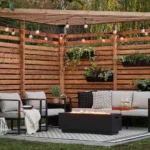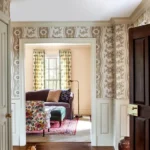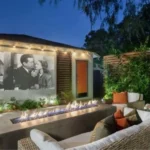Mixing Modern and Traditional Styles in Interior Design creates a harmonious blend of timeless elegance and contemporary functionality, making your home both stylish and comfortable.
This approach combines the sleek lines and minimalism of modern aesthetics with the intricate details and warmth of traditional elements.
The result is a balanced space that reflects individuality while embracing the best of both worlds.
Whether it’s pairing a vintage armchair with a sleek glass coffee table or blending classic moldings with modern lighting, mastering this fusion requires attention to contrast, balance, and cohesion.
In this guide, we’ll explore practical tips, room-specific ideas, and expert strategies to seamlessly mix these styles and transform your interiors into a stunning visual narrative.
Why Blend Modern and Traditional Styles?
The combination of modern and traditional styles, also known as transitional design, allows you to:
- Personalize Spaces: Reflect your unique personality by merging aesthetics that resonate with your tastes.
- Achieve Timeless Appeal: Traditional pieces offer lasting elegance, while modern elements ensure up-to-date sophistication.
- Add Depth and Character: A mix of textures, materials, and design philosophies brings richness to your interiors.
Key Principles for Blending Modern and Traditional Styles
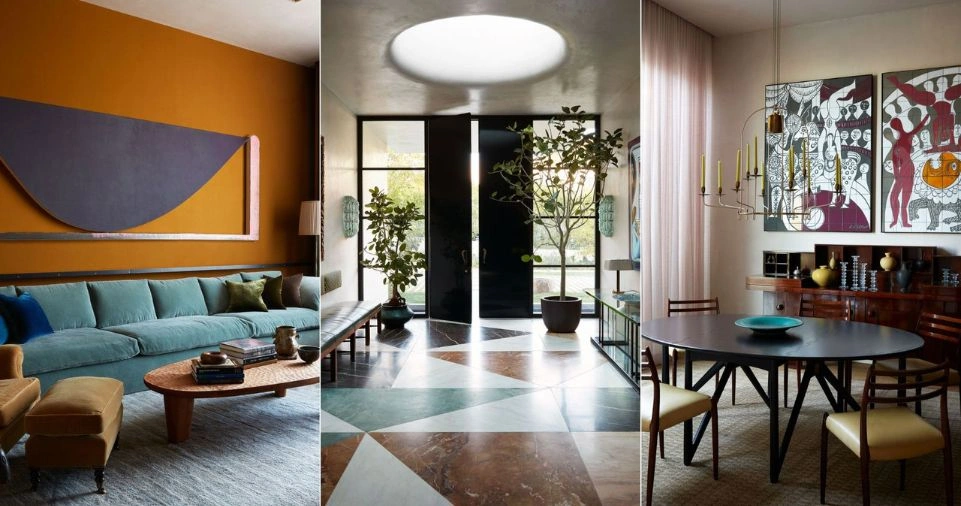
Balance is Key
Strike a balance between modern and traditional elements to avoid overwhelming one style over the other. Use the 80/20 rule: make one style dominant (80%) and use the other as accents (20%).
Focus on Contrast
Contrast creates visual interest. For example:
- Pair a sleek, modern glass coffee table with an ornate, traditional armchair.
- Use light, neutral walls as a backdrop for vintage paintings.
Maintain a Cohesive Color Palette
Choose a neutral or monochromatic color palette to tie the different elements together. Neutrals like beige, gray, and white serve as versatile backgrounds for incorporating diverse styles.
Step-by-Step Guide to Mixing Modern and Traditional Styles
Step 1: Choose a Focal Point
Select one dominant piece as the centerpiece, such as:
- A traditional fireplace surrounded by minimalist furniture.
- A modern statement chandelier above a vintage dining table.
Step 2: Blend Materials and Textures
Mix materials to add depth:
- Traditional Materials: Wood, marble, and leather.
- Modern Materials: Steel, glass, and acrylic.
Example: Combine a plush velvet sofa with a sleek metal coffee table.
Step 3: Incorporate Art and Décor
Artwork and accessories are excellent ways to blend styles. For instance:
- Hang a contemporary abstract painting above a Victorian-era console table.
- Pair modern vases with antique figurines on a shelf.
Step 4: Use Lighting Strategically
Lighting is an essential tool for uniting design styles. Consider:
- A vintage chandelier in a room with modern furniture.
- Recessed lighting to highlight traditional crown moldings.
ALSO READ: How to Maximize Space in Small Apartments with Smart Interior Design
Practical Examples of Mixing Modern and Traditional Styles
| Modern Feature | Traditional Complement | How They Work Together |
|---|---|---|
| Minimalist white sofa | Persian rug | Neutral sofa allows the vibrant rug to stand out. |
| Open-plan shelving | Antique wooden sideboard | Juxtaposition of open design with ornate detailing. |
| Geometric-patterned cushions | Classic tufted armchair | Cushions add a fresh vibe to a timeless piece. |
| Industrial pendant lights | Wooden dining table | Lights bring edge, while the table adds warmth. |
Room-by-Room Ideas for Transitional Design
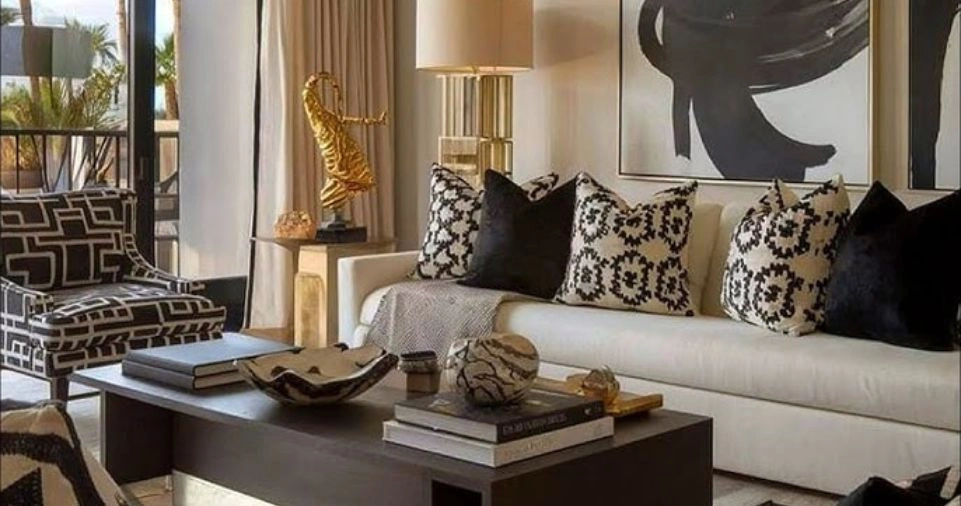
Living Room
- Traditional Base, Modern Accents: Start with a traditional rug or sofa and add modern artwork and lighting.
- Mixing Furniture Styles: Combine a mid-century modern coffee table with an Edwardian armchair.
Kitchen
- Modern Cabinets, Traditional Hardware: Opt for sleek cabinetry but add classic brass or bronze handles.
- Mixing Backsplashes: Use a traditional subway tile pattern in modern, glossy finishes.
Bedroom
- Layering Textures: Combine a traditional upholstered headboard with crisp, modern bedding.
- Lighting Choices: Use bedside lamps with vintage bases and modern lampshades.
Bathroom
- Fixtures and Finishes: Pair a freestanding clawfoot tub with sleek, wall-mounted faucets.
- Mixed Tiles: Combine traditional mosaic tiles with large-format modern tiles.
Tips for a Seamless Design Integration
Use Transitional Furniture
Transitional furniture often features clean lines with subtle traditional details, making it an ideal choice for blending styles.
Leverage Accessories
Accessories can bring styles together without making drastic changes:
- Traditional vases with modern floral arrangements.
- Contemporary sculptures on classic wooden tables.
Create Visual Layers
Layer textures and styles for a polished look:
- Use throw pillows in a mix of modern geometric patterns and classic damask designs.
- Layer rugs, combining a simple modern one with a detailed Persian or Oriental rug.
Common Mistakes to Avoid
- Overloading the Space: Too many elements from both styles can lead to a cluttered appearance.
- Ignoring Proportions: Ensure furniture and décor pieces’ complement each other in scale and size.
- Inconsistent Palette: Mismatched colors can disrupt the cohesive look.
The Benefits of Mixing Styles
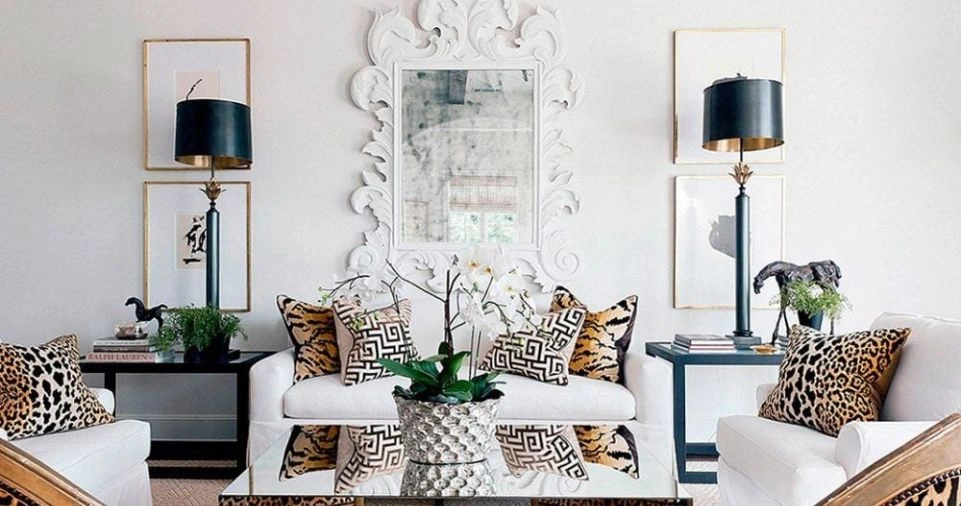
- Flexibility: This approach suits all types of homes, from city apartments to countryside cottages.
- Adaptability: As trends change, you can update modern elements without compromising traditional roots.
- Budget-Friendly: Combining styles lets you invest in timeless traditional pieces while saving on affordable modern items.
ALSO READ: How to Make Your Bedroom a Cozy Retreat with Minimal Effort?
Conclusion
Blending modern and traditional interior design styles offers endless opportunities for creativity.
By focusing on balance, contrast, and cohesion, you can create spaces that exude charm and sophistication while catering to your practical needs.
Remember, the key is to let your personality shine through as you artfully combine the best of both worlds.
FAQs
1. Can mixing styles work in small spaces?
Yes! Use neutral tones and multipurpose furniture to avoid overcrowding while maintaining the mix of styles.
2. How do I start with a tight budget?
Invest in one or two quality traditional pieces like an antique table and accessorize with modern, budget-friendly décor.
3. What’s the easiest way to try this design?
Start with accessories, like pairing modern cushions with traditional chairs or hanging contemporary art in a classic room.


